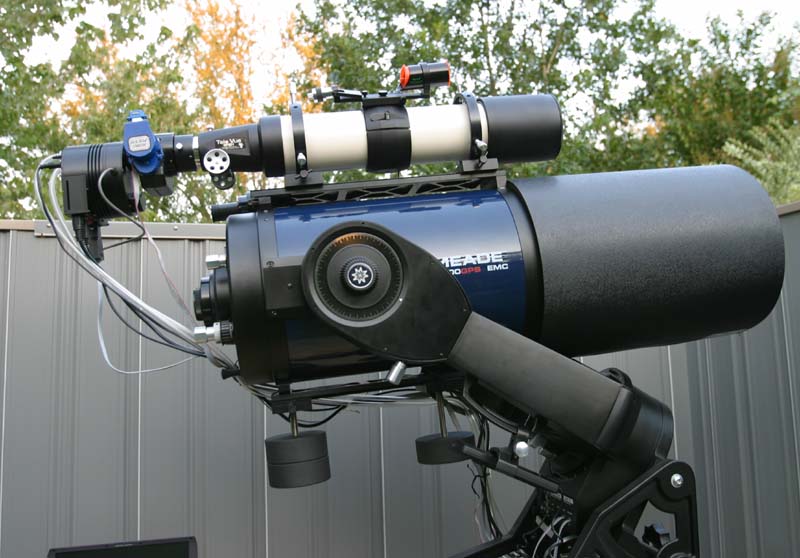
Piggyback Mounting of a TeleVue NP-101
Recently I have been wanting to do some wide-field imaging, and so acquired a TeleVue NP-101. To leverage my existing equipment as much as possible (i.e., not buy a new mount), I sought a way to use the 10" LX200GPS as the mount for the NP-101. The key was not so much the weight involved, as the NP-101 only comes in at about 10 pounds. Rather, the hard part was getting the setup balanced in both the R.A. and declination axes. Balance is critical for good autoguiding performance, and probably also for the longevity of the mount's motors and gear trains. I made use of the Losmandy dovetail system both to mount
the NP-101 on the top of the LX200, and to attach adjustable weights to
the bottom of the OTA. |
|
|
|
The weights are adjustable in two axes. They can be moved fore and aft by sliding along the dovetail mounting plate. Also, the weights are threaded, so the leverage (distance from the OTA) can be adjusted by screwing them in or out. They easily clear the mount's base when the scope is pointed skyward. In the setup shown, the scope is perfectly dynamically balanced in both axes. That is, it will stay balanced in both the R.A. and declination axes no matter where I point it in the sky. This much harder to achieve than static balance, wherein the scope will be balanced for one orientation, but go out of balance if it is pointed elsewhere. Another concern I had was the additional stress that would be placed on the motors and gears when the scope slews. Since it is balanced, there is no particular increase in motor/gear load when simply tracking at the sidereal rate. But when the scope starts or stops a fast slew, there is now a lot more mass to get moving or to stop, and this does place additional stress on the system. To address this, I changed the "max slew rate" setting in the LX200's AutoStar controller to 2 degrees per second, instead of the default 8 degrees per second. If you look closely, you'll notice that I also re-used the modified LX200GPS microfocuser/RoboFocus unit so I can automatically focus the NP-101. Requirements for good autoguiding with the LX200GPSThere are a number of factors which must be correct for good guiding with the LX200GPS. Probably most of these apply to other mount systems as well. Note that only one of these items is periodic error correction (PEC).
|
